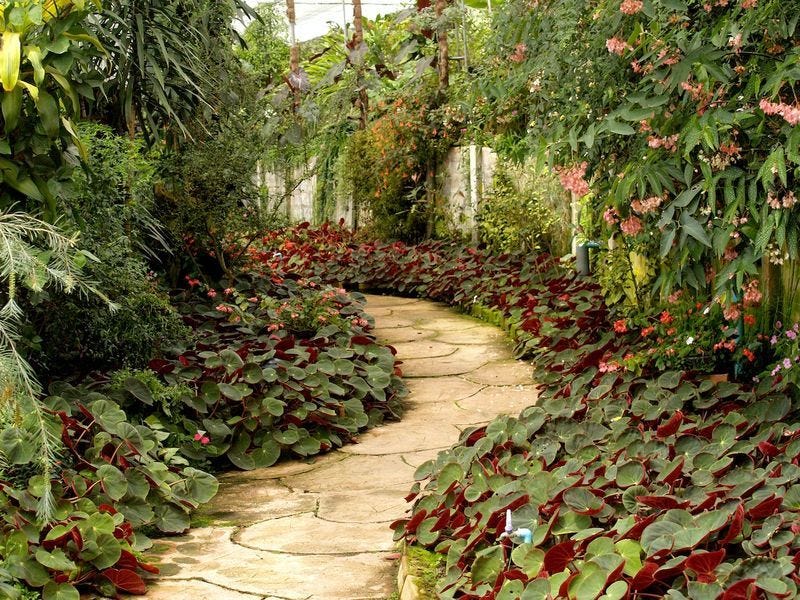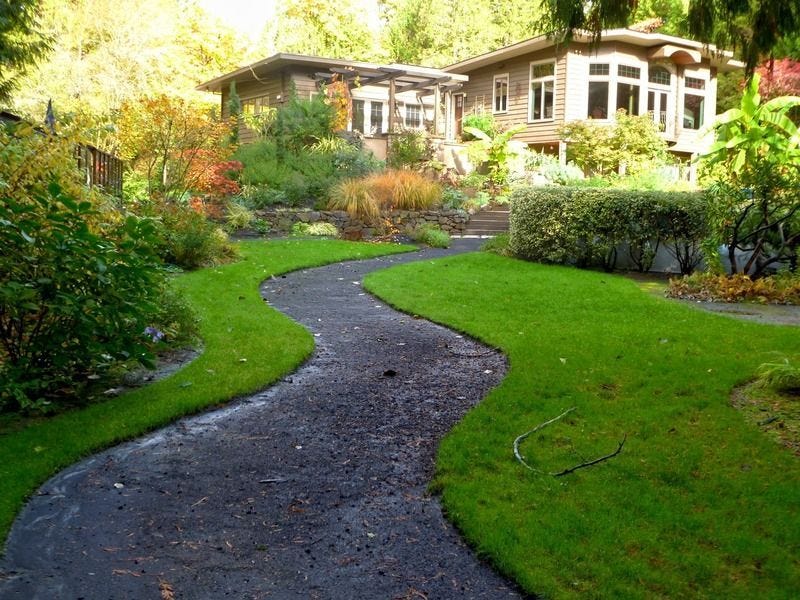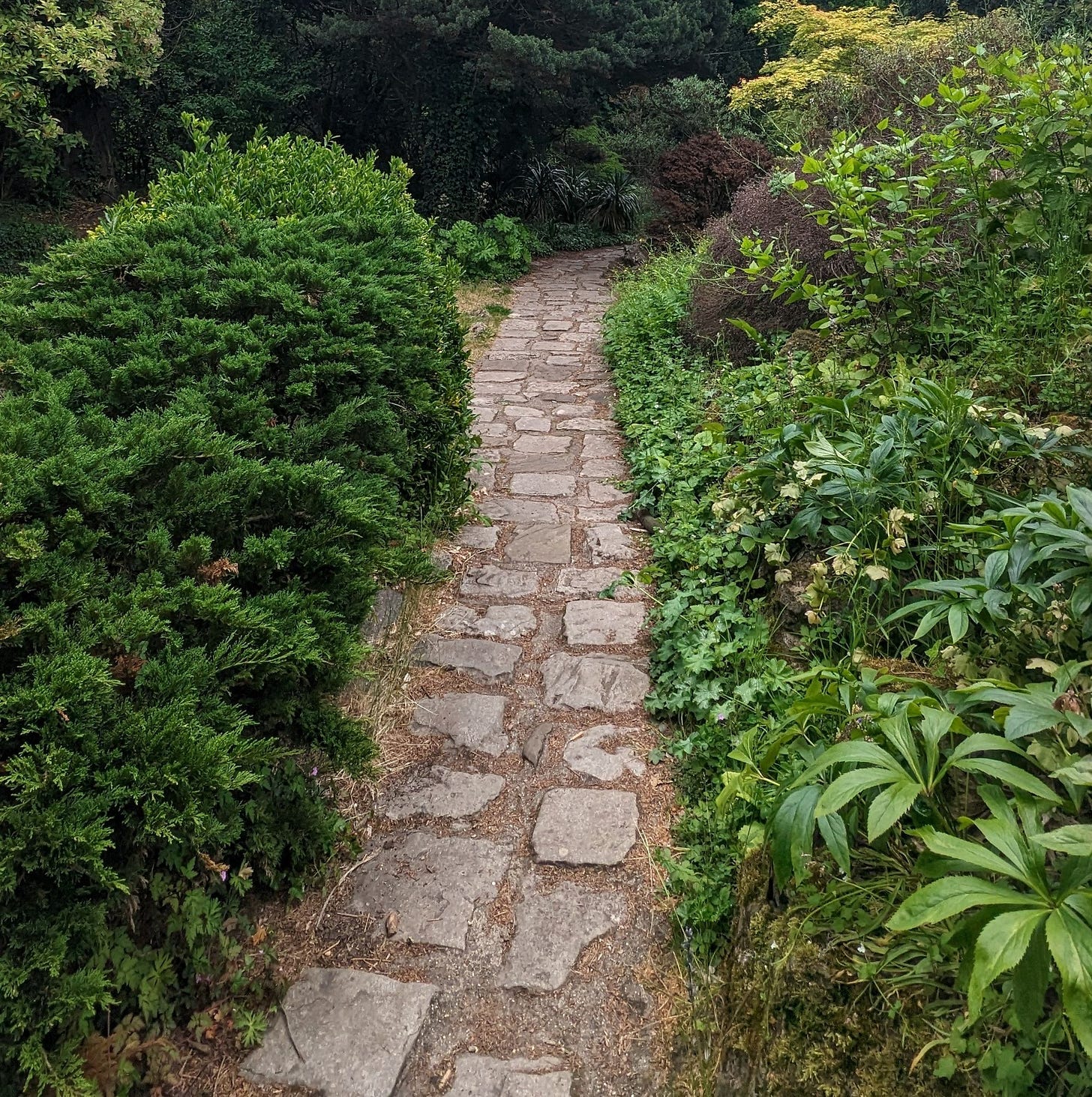Serpentine Lines in Garden Design
Curvilinear gardens are often considered more visually appealing, especially when the Serpentine Line is applied.
In nature, you rarely see perfectly straight lines. Curved lines and shapes are commonly found in natural spaces such as meandering rivers, rolling hills, and tree canopies. Incorporating curves into our garden designs creates a more natural and harmonious feel that resonates with our innate appreciation for organic forms.
In an earlier post, I discussed the appeal of curvilinear design. Curves have a natural appeal to us that is proven by psychological studies. This is why I try to incorporate the principle of the serpentine line into my garden designs wherever possible.
What is the Serpentine Line?
The Serpentine line is another name for the "Line of Beauty", as coined by William Hogarth in his 1753 book The Analysis of Beauty. Hogarth observed that an S-shaped Curved line (looking like a serpent) signifies liveliness and activity that excites the viewer much more than straight lines. It is for this reason that classical sculptures using an S-curve pose are considered more attractive than rigid poses.
In the context of garden design, the excitement evoked by a serpentine line creates a sense of intrigue that beckons a visitor further to explore the landscape beyond what they can see where they are standing. Some of our most celebrated landscapes incorporate serpentine lines. This is most pronounced in landscape parks where serpentine lakes are a defining feature, such as the lake described in our earlier post about Painshill Park.
Take a look at the picture below of a winding path that is accentuated by metal railings and a concrete wall. Does it not intrigue you and beckon you to explore what is around that corner? This is a great example of a serpentine line used to great effect in a landscape design.
The railing draws your eye toward the distance without making it seem far away. The tree and concrete wall on the left side of this picture hides what is beyond which intrigues a visitor to this space to see what lies beyond. In this example, the wall hides the background the most but it could just easily be the trunk of that tree or a large shrub. This is what makes this curved layout easy to achieve in a landscape while looking natural and not contrived. This is advantageous for a low-maintenance garden because most of these shapes are naturally curved in nature, you do not need to aggressively prune a shrub into a flat hedge to make a natural border for such a curved space. Continuing along this path allows the landscape to reveal itself and provide different perspectives as you navigate through the garden.
Serpentine Paths in Home Gardens
When the serpentine line of beauty is applied to gardens, it can make a small space feel bigger due to the inviting nature and the element of surprise it can create. Defining the curves by building up planting to the edge of the path is more effective in creating that feeling of intrigue. Compare the two pictures below to see what I mean by this. While both are aesthetically pleasing and successfully accomplish the energy of movement and fluidity, garden #1 is more likely to surprise you as you continue along the path and encourage you to explore further. In garden #2 you already know what to expect further along the path and even though this is a larger space it somehow feels smaller.
For Garden #2, shaping a path like this may look nice, but it's not likely to lead a visitor to this space to follow its meandering path. Most likely, people will walk in a straight line across the lawn as they head to the steps. When you have a curving path, give it a reason to curve.
Psychological Comfort
Gardens that use serpentine lines can evoke feelings of tranquility and comfort. Even though the plants are closing in on you in Garden #1, it is less likely to induce feelings of confinement or restriction. It feels more cosy than cramped. A similar planting scheme in an area defined by sharp angles and straight lines will feel more claustrophobic with the end of the pathway seeming further away than it really is. Compare the path below with Garden #2 - the path you see in frame is much shorter than the serpentine path but the end of it feels more distant. Notice how the shrubs feel like they are closing in on you and they will need frequent trimming to keep them from over-spilling onto the path. It is impossible to expect a shrub or groundcover to naturally have a rectangular shape.
Play of Light and Shadow
The use of serpentine lines can create interesting plays of light and shadow, enhancing the garden's visual appeal as sunlight filters through the foliage and highlights different areas. As the sun passes overhead, traveling East to West, the garden will have many different aspects of sun and shade throughout the day. This makes the space feel larger when it reveals itself in different ways not just over time, but also as you travel through the garden.

Serpentine Lines in Small Gardens
Can serpentine lines be applied to small gardens where there is no space for a meandering path? Yes, they can be applied in smaller spaces. Instead of using it to define a pathway, they can be used to define the outer area of a central space in a small garden. Many residential gardens follow the pattern of a rectangular lawn, bordered by shrubs, generally divided by a straight line of landscape edging. If the edging is applied using serpentine lines, the plants will reveal themselves as you pass through the space and look more natural. Planting the shrubs in a way that they grow to the edge of the border will create a low-maintenance landscape as it will not need frequent trimming to keep it from spilling over the edging.
When planning a space this way, you can lay a hose on the ground to get a feel for the curved line and use that as a guide for digging the narrow trench needed for placing landscape edging. While a hose is flexible, it will only curve so far before it starts to kink so this makes it a much better guide for a natural-looking serpentine line than using rope.
Gardens designed using serpentine lines are certainly appealing to many, however it's important to note that the preference for garden design is subjective. Some people find beauty in structured, geometric gardens with straight lines and right angles, while others may prefer the more organic and flowing nature of serpentine designs. Ultimately, the choice of garden design should reflect the personal taste and intended purpose of the space. When I design gardens I usually offer 3 layout choices, I have found most people tend to favour the layouts that use serpentine lines, but a small minority do prefer the straight-edged layouts.








